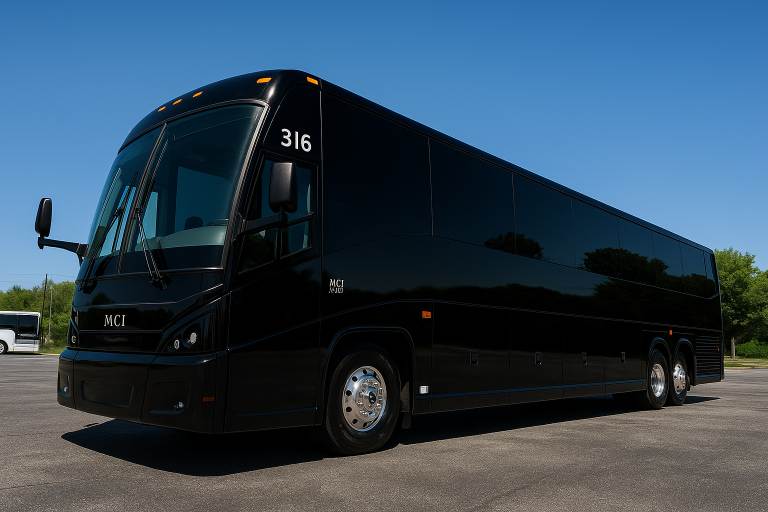- Charter Bus Rental Bellflower /
- Blog /
- How to Stop Sickness on a Bellflower Charter Bus
How to Stop Sickness on a Bellflower Charter Bus
Motion sickness can derail even the most exciting trip, but a comprehensive strategy—combining seating tactics, sensory alignment, dietary measures, natural aids, and medications—can keep queasiness at bay and help you arrive feeling refreshed. And with Charter Bus Rental Bellflower, you’ll have access to all the amenities and custom options you need for your group’s next trip. Call 562-202-5212 today to learn more and get a free quote!

Quick Answer
Sit in the front of the bus, face forward, and look out the window at the horizon. Avoid reading or looking at your phone. Keep cool air flowing around you. Snack on ginger candies or crackers and sip water. If you feel sick, close your eyes, breathe deeply, and use an acupressure wristband. For severe cases, take non-drowsy motion sickness medication before boarding.
What Is Motion Sickness?
Motion sickness is a common condition that occurs when your brain receives conflicting signals from your inner ear, eyes, and body about movement. This sensory mismatch can lead to symptoms like nausea, dizziness, sweating, and vomiting. It often strikes during travel by car, bus, boat, or plane, especially if you're prone to it or engaging in activities like reading or using screens while in motion.
What Causes Motion Sickness?
Motion sickness happens when there's a disconnect between what your inner ear senses (movement) and what your eyes see (often stationary objects inside the vehicle). For example, if you're riding in a charter bus through Bellflower and focusing on your phone or a book, your inner ear detects the motion of the bus, but your eyes don't see the movement. This conflict confuses your brain and can trigger symptoms. Factors like poor ventilation, strong odors, anxiety, and dehydration can make it worse.
6 Tips to Prevent Motion Sickness
Sit in the Front and Face Forward
On a bus, motion is least pronounced near the front over the wheels. Choose a seat here and always face forward. Looking out the windshield or side windows at a fixed point on the horizon helps align the visual cues with your inner-ear signals, reducing sensory conflict. Recline slightly and rest your head against the headrest to stabilize yourself. If symptoms arise, adjust your seat angle or briefly stand in the aisle to reset your balance.
Control Sensory Inputs
Minimize conflicting signals from your eyes and inner ears. Keep fresh air flowing via open windows or overhead vents to reduce nausea triggers. Avoid reading, screen use, or close-focus tasks, as these worsen sensory mismatch. When symptoms start, close your eyes, take slow, deep breaths, and focus on controlled breathing to calm your nervous system. Listening to music or audiobooks can distract you and extend your tolerance before nausea sets in.
Snack Smart and Stay Hydrated
Your diet before and during the trip influences your susceptibility to motion sickness. Eat bland, low-fat, low-acid snacks like plain crackers, whole-grain toast, apples, or bananas to settle your stomach. Ginger in any form (ginger ale, tea, candies) is a natural remedy that can help prevent nausea. Sip water or electrolyte drinks and avoid alcohol, caffeine, and heavy, greasy foods before and during travel.
Try Non-Drug Remedies
Natural remedies can complement other preventative measures. Wristbands that apply acupressure to the P6 (Neiguan) point on your wrist may relieve nausea for some people. Sucking on peppermint or chamomile candies or sipping herbal teas can also help, as pleasant flavors and scents can modulate nausea. Aromatherapy with scents like rose or lavender has shown promise in some studies but may not work for everyone.
Use Medications If Needed
If other methods aren’t enough, medications can offer reliable relief, especially if taken before symptoms start. Scopolamine patches provide up to 72 hours of protection and are less likely to cause drowsiness. Antihistamines like dimenhydrinate (Dramamine), meclizine (Bonine), or diphenhydramine (Benadryl) are effective but can be sedating. Non-drowsy options like meclizine are better for long trips. In severe cases, prescription antiemetics like ondansetron may be used under a doctor’s guidance. Combining medication with behavioral strategies maximizes effectiveness.
Practice Habituation Exercises
Gradual exposure to motion can train your brain to adapt and reduce sensitivity over time. Try habituation exercises like head-turns while focusing on a stationary target or gentle swaying motions to desensitize your vestibular system. Start with brief, mild exposures and gradually increase duration as your tolerance improves. Consistent practice, possibly with guidance from a vestibular therapist, can lead to lasting symptom reduction.
Crafting Your Complete Strategy
Before departure, book a front-row seat and prepare bland, ginger-based snacks. Apply a scopolamine patch or take non-drowsy antihistamine 30–60 minutes prior if needed. During the trip, face forward, gaze at the horizon, and keep fresh air circulating. Sip water or ginger ale, chew ginger candies, and avoid screens. At the first sign of queasiness, use an acupressure wristband, suck on peppermint candy, close your eyes, and breathe deeply. Over the long term, incorporate weekly habituation exercises and gradually expose yourself to shorter trips to build tolerance. By aligning your senses, choosing stomach-friendly foods, leveraging natural aids, training your vestibular system, and using medications strategically, you can master motion sickness and enjoy every mile of your charter bus adventure.
For more tips and to book your next comfortable, customizable ride, call Charter Bus Rental Bellflower at 562-202-5212. Our team is available 24/7 to help plan your perfect trip across California.
What’s the Difference Between a Charter Bus and a Coach Bus?
How Many Seats are on a Bellflower Charter Bus?
What Amenities Do Bellflower Charter Buses Have?
Guide On How To Book a Charter Bus in Bellflower, California
Top 10 Groups in Bellflower, California That Can Benefit from Long-Term Charter Bus Rentals
Ready to Book a Bus?
562-202-5212Agents available 24/7
